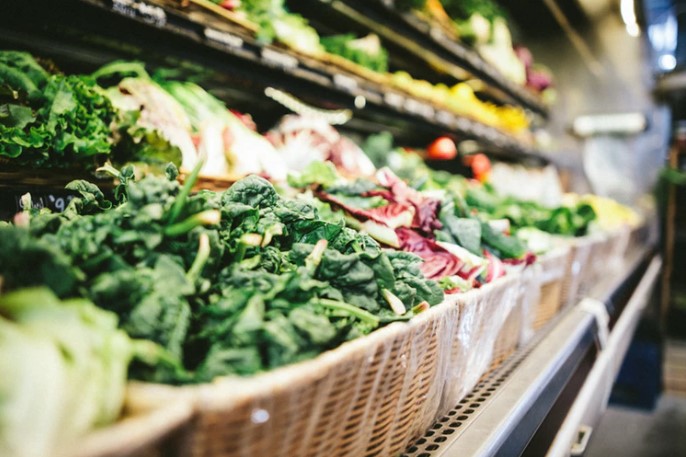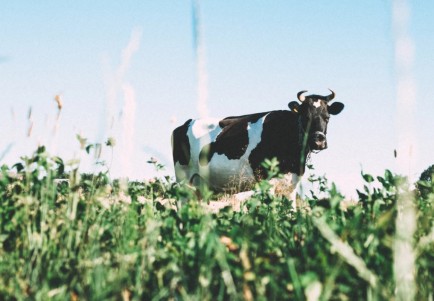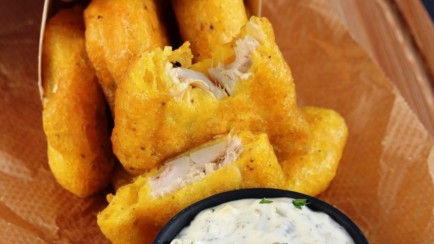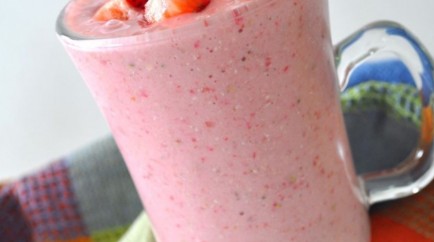As flu season rages on, it might be comforting to know that what you eat can help your immune system fight off any potential coughs, sneezes and sniffles.
Although there is not one specific food or diet known to rid your body of disease or prevent ever getting sick, eating foods full of nutrients can be beneficial, said Samantha Heller, a registered dietitian and senior clinical nutritionist at NYU Langone Health in New York.
“The immune system needs all nutrients to function optimally. These include vitamins, minerals, fats, carbohydrates, protein and phytonutrients,” Heller said.
A typical Western diet — one loaded with red and processed meats, fried foods, fast foods, junk foods, sweets and soda — “increases the risk for chronic diseases in part because our immune systems are overtaxed and not getting the nutrients they need,” she said.
To get the nutrients your body needs, think of your diet as a rainbow, said Dr. Eddie Fatakhov, a physician and nutritionist at the Center for Internal and Integrative Medicine in Alpharetta, Georgia.
Of course, there are many not-so-colorful foods that can benefit your immune system, including garlic and Brazil nuts, which are sources of a mineral called selenium. Selenium helps your body make special proteins, called antioxidant enzymes, which play a role in preventing cell damage, according to the US National Library of Medicine.
Don’t forget about herbs and spices — such as turmeric and ginger — that have immunity benefits as well as yogurt, which Fatakhov called his “go-to” food for boosting immunity.
“It’s got the live culture in there, and what live culture does is helps with the gut microbiome,” he said, referring to how the live cultures, or beneficial bacteria, found in yogurt can help keep your gut microbiome — the ecosystem of microorganisms in your gut — healthy. It turns out your gut is home to about 70% to 80% of your immune cells.
A systematic review of 23 randomized controlled trials, involving 6,269 children, found that consuming probiotics, or beneficial bacteria, “appears to be a feasible way” to decrease the incidence of respiratory tract infections in children. The review was published in the journal Medicine in 2016.
Yet many colorful foods also can provide benefits for your immune system and gut health. Just as the rainbow has seven colors, here are some colorful foods that can help fuel your immunity.
Red, orange and yellow tends to have vitamin C
“If you’re eating the rainbow, any red bell peppers and green bell peppers have a lot of vitamin C. They have a lot of antioxidants and phytonutrients,” Fatakhov said.
“Anything that is orange or yellow tends to have a lot of vitamin C in there,” he said. “Vitamin C will help the immune system.”
Citrus fruits, tomatoes and tomato juice are major contributors of vitamin C to the American diet, but Heller said that other good food sources include strawberries, kiwi, Brussels sprouts and cauliflower.
Although storing food for a prolonged period of time and cooking may reduce vitamin C content, fortunately many of the best food sources of vitamin C, such as fruits and vegetables, are usually consumed raw, according to the National Institutes of Health.
Leafy greens pack powerful nutrients
“Any of the vegetables that vitamin D is in — green leafy vegetables — all help the immune system,” Fatakhov said. “We’ve known in several studies that vitamin D actually plays a huge role in the immune system.”
There’s a group of mostly green vegetables called cruciferous, which include arugula, broccoli, Brussels sprouts, kale, cabbage and collard greens. Those cruciferous vegetables are rich in nutrients that can benefit your immune system, including vitamins C, E and K; carotenoids; folate; and minerals.
“What I think is powerful in the cruciferous vegetable group — kale, Brussels sprouts, broccoli — is phytonutrients, vitamins, minerals, magnesium, but specifically the indole compound that’s found specifically in the cruciferous vegetable group,” Fatakhov said.
When eaten, cruciferous vegetables are a source of indole-3-carbinol, which has been studied, along with other indoles, for the role it may play in lowering the risk of several types of cancer. That research remains ongoing.
Blue, indigo and violet foods to add to your diet
When it comes to foods with blue, indigo and violet hues, dried fruits — such as dried dates, dried figs and prunes — can pack a big nutrient punch for their shrunken size.
The reason is that nutrients and fiber are more concentrated when water is removed from fruit. For comparison, a half-cup of dried apricot halves has 4.7 grams of fiber, but the same amount of fresh apricot slices has 1.6 grams of fiber. Dried fruit is also a rich source of antioxidants and the B vitamin folate. However, it’s important to keep in mind that the natural sugars in dried fruit are also more concentrated.
“Be sure to include at least two or more sources of fiber in every meal. Fiber comes from plants such as spinach, apples, oats, tofu, chickpeas and nuts,” Heller said.
Of course, outside of diet, there are other ways to stay healthy, especially during flu season.
“Stay well-hydrated. Water is your best bet. Get plenty of sleep,” Heller said. “Get a flu shot. Wash your hands often, and keep them away from your face.”
Original article: https://edition.cnn.com/2019/02/05/health/immune-system-diet-food-as-fuel-explainer/index.html



























Comments